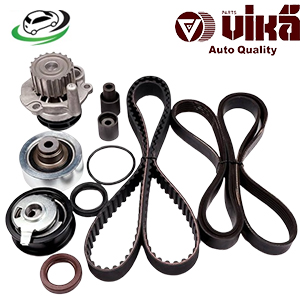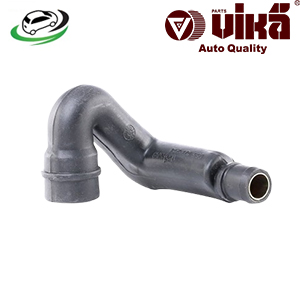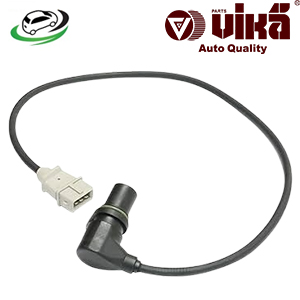-2%
Get Engine Crankshaft Position Sensor Audi A4 A4 Quattro 1997-2000 & Volkswagen Passat 1998-2000 L4 1.8L 50906433
The engine crankshaft position sensor is a crucial component in modern internal combustion engines. It plays a vital role in monitoring the position and rotational speed of the crankshaft, providing this critical data to the engine control unit (ECU). The ECU uses this information to manage the timing of fuel injection, ignition, and other engine functions, ensuring optimal performance, fuel efficiency, and emissions control. In this guide, we’ll delve into the function, types, importance, common issues, and replacement of the crankshaft position sensor.
1. Understanding the Crankshaft Position Sensor
a. Role and Function:
The crankshaft position sensor’s primary function is to monitor the position and speed of the crankshaft. The crankshaft is the engine’s main rotating shaft, and its position and speed directly affect the timing of various engine processes, such as:
- Fuel Injection: The sensor data helps the ECU determine when and how much fuel to inject into the combustion chambers.
- Ignition Timing: It helps control when the spark plugs should ignite the air-fuel mixture, ensuring efficient combustion.
- Engine Timing: The sensor ensures that all engine processes are synchronized, preventing misfires and rough running.
b. How It Works:
The crankshaft position sensor typically works in one of two ways:
- Magnetic Sensor: This type uses a magnet and a coil of wire to generate an electrical signal when the crankshaft passes by. The signal’s frequency and amplitude vary with the speed and position of the crankshaft.
- Hall Effect Sensor: This type uses a semiconductor chip and a magnetic field. When the crankshaft passes by, it changes the magnetic field, producing a voltage signal that the ECU reads.
The sensor is usually mounted near a toothed wheel or reluctor ring attached to the crankshaft. As the crankshaft rotates, the teeth on the wheel pass by the sensor, creating a pattern of electrical signals that correspond to the crankshaft’s position and speed.
c. Location:
The crankshaft position sensor is typically located near the crankshaft itself, often at the front or rear of the engine block, depending on the vehicle’s design. Its exact location can vary, but it is always positioned to accurately read the crankshaft’s movement.
2. Importance of the Crankshaft Position Sensor
a. Engine Performance:
The crankshaft position sensor is essential for the engine to operate smoothly. Without accurate data from the sensor, the ECU cannot correctly time fuel injection or ignition, leading to poor performance, reduced fuel efficiency, and increased emissions.
b. Preventing Engine Damage:
If the crankshaft position sensor fails, the ECU may not be able to synchronize the engine’s processes correctly. This can lead to engine misfires, stalling, or even severe engine damage if left unaddressed. In some cases, the engine may not start at all.
c. Emissions Control:
Accurate timing of fuel injection and ignition is critical for minimizing harmful emissions. A malfunctioning crankshaft position sensor can lead to incomplete combustion, increasing the levels of unburned hydrocarbons, carbon monoxide, and nitrogen oxides in the exhaust.
d. Diagnosing Engine Issues:
Modern vehicles use the crankshaft position sensor to help diagnose engine problems. The ECU monitors the sensor’s output and can detect issues like misfires, incorrect timing, or sensor malfunctions, triggering a diagnostic trouble code (DTC) that can be read with an OBD-II scanner.
3. Types of Crankshaft Position Sensors
a. Inductive Sensors (Magnetic Sensors):
- Construction: These sensors consist of a magnet and a coil of wire. As the crankshaft’s reluctor wheel passes by, it induces a voltage in the coil, which the ECU reads.
- Advantages: Inductive sensors are simple and robust, making them reliable in harsh engine environments.
- Disadvantages: They can be sensitive to interference and may produce weaker signals at low engine speeds.
b. Hall Effect Sensors:
- Construction: Hall effect sensors use a semiconductor chip that generates a voltage when exposed to a magnetic field. The sensor reads the changes in the magnetic field as the crankshaft rotates.
- Advantages: Hall effect sensors produce a consistent signal regardless of engine speed and are less prone to interference.
- Disadvantages: They are more complex and can be more expensive than inductive sensors.
c. Optical Sensors:
- Construction: Optical sensors use a light source and a photodetector. The crankshaft has a disk with slots or holes that pass between the light source and detector, creating a signal based on the interruption of the light beam.
- Advantages: Optical sensors can provide highly accurate position data.
- Disadvantages: They are more susceptible to dirt and contamination, which can affect their performance.
4. Common Issues with Crankshaft Position Sensors
a. Sensor Failure:
Crankshaft position sensors can fail due to several reasons, including:
- Heat Damage: The sensor operates in a high-temperature environment, which can cause it to degrade over time.
- Electrical Issues: Wiring or connector problems can lead to intermittent or complete sensor failure.
- Physical Damage: Impact or wear can damage the sensor or its reluctor wheel, leading to inaccurate readings.
b. Symptoms of a Failing Sensor:
A failing crankshaft position sensor can cause various symptoms, including:
- Engine Stalling: The engine may stall unexpectedly or have trouble starting if the sensor fails to provide accurate data.
- Misfires: The engine may misfire due to incorrect timing of fuel injection or ignition.
- Reduced Power: A malfunctioning sensor can lead to poor engine performance and reduced power output.
- Check Engine Light: The ECU may detect a problem with the sensor and trigger the check engine light, along with storing a diagnostic trouble code.
c. Diagnostic Trouble Codes (DTCs):
Common DTCs related to the crankshaft position sensor include:
- P0335: Crankshaft Position Sensor “A” Circuit Malfunction
- P0336: Crankshaft Position Sensor “A” Circuit Range/Performance
- P0337: Crankshaft Position Sensor “A” Circuit Low Input
- P0338: Crankshaft Position Sensor “A” Circuit High Input
5. Replacing the Crankshaft Position Sensor: Step-by-Step Guide
a. Preparation:
Before replacing the crankshaft position sensor, gather the necessary tools, including a wrench or socket set, screwdrivers, and possibly an OBD-II scanner to clear any codes after replacement. Ensure the vehicle is parked on a level surface, and the engine is cool.
b. Accessing the Sensor:
- Step 1: Locate the crankshaft position sensor, which is usually mounted near the crankshaft at the front or rear of the engine block.
- Step 2: Remove any components obstructing access to the sensor, such as the engine cover, air intake ducting, or other nearby components.
c. Removing the Old Sensor:
- Step 1: Disconnect the electrical connector from the sensor.
- Step 2: Remove the mounting bolt(s) securing the sensor to the engine block.
- Step 3: Carefully remove the sensor from its housing, noting its orientation for the installation of the new sensor.
d. Installing the New Sensor:
- Step 1: Position the new sensor in the same orientation as the old one and insert it into the housing.
- Step 2: Secure the sensor with the mounting bolt(s), tightening them to the manufacturer’s specifications.
- Step 3: Reconnect the electrical connector to the new sensor.
e. Final Checks:
- Step 1: Reassemble any components that were removed to access the sensor.
- Step 2: Start the engine and check for any issues. The engine should run smoothly, and the check engine light should not be illuminated.
- Step 3: Use an OBD-II scanner to clear any diagnostic trouble codes related to the old sensor.
6. Maintenance Tips for the Crankshaft Position Sensor
a. Regular Inspections:
Periodically inspect the sensor and its wiring for signs of damage or wear. Early detection of issues can prevent more severe problems from developing.
b. Keep the Engine Clean:
Ensure that the engine bay is kept clean and free of oil, dirt, and debris that could interfere with the sensor’s operation. Contamination can lead to inaccurate readings or sensor failure.
c. Monitor Engine Performance:
Pay attention to any changes in engine performance, such as rough idling, stalling, or reduced power. These can be early signs of a failing crankshaft position sensor.
d. Replace the Sensor at the First Sign of Trouble:
If you experience symptoms of a failing sensor, replace it promptly to avoid potential engine damage. Ignoring the issue can lead to more severe and costly repairs.
e. Use Quality Parts:
When replacing the crankshaft position sensor, always use high-quality, OEM (original equipment manufacturer) or equivalent parts. This ensures proper fit, function, and longevity.
Follow us on Facebook for more parts.



